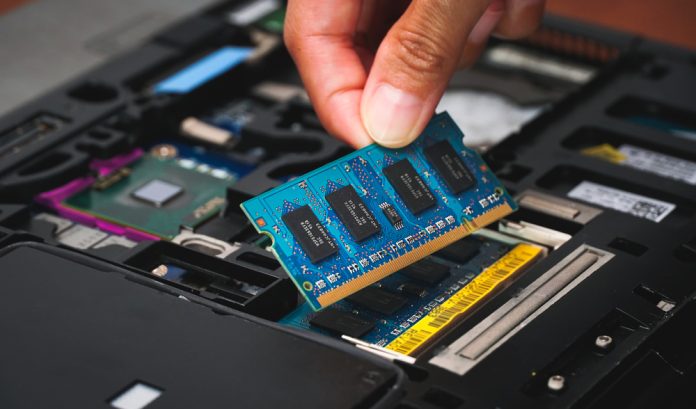Researchers have discovered that SOT-MRAM memory technology could replace cache memory in computer architecture in the future.
The team achieved a groundbreaking advancement in memory technology in close collaboration with Antaios, a magnetic random access memory company in France.
Their innovation, based on Spin-Orbit Torque (SOT) Magnetic Random-Access Memory (MRAM), offers a highly efficient and powerful solution for data processing and storage – a transformative step forward for technologies ranging from smartphones to supercomputers.
“This prototype is one of a kind and could revolutionise data storage and processing. It aligns with global goals to reduce energy consumption and paves the way for faster, more efficient memory solutions,” said Dr Rahul Gupta, a former postdoctoral researcher at the JGU Institute of Physics and lead author of the study.
The benefits of SOT-MRAM memory technology
SOT-MRAM stands out for its superior power efficiency, nonvolatility, and performance compared to static RAM, making it a strong candidate to replace cache memory in computer architecture, for example.
This cutting-edge technology uses electrical currents to switch magnetic states, enabling reliable data storage. However, one key challenge has been to reduce the high input current required during the writing process while ensuring industrial compatibility.
This includes maintaining sufficient thermal stability to store the data for over ten years and minimising the energy required to perform the storage task.
By exploiting previously neglected orbital currents, researchers at JGU and Antaios have developed a unique magnetic material incorporating elements such as Ruthenium as a SOT channel – a fundamental building block of SOT-MRAM memory technology – to significantly enhance performance.
Their innovation includes:
- More than 50% reduction in overall energy consumption compared to existing memory technologies on an industrial scale.
- A 30% boost in efficiency, enabling faster and more reliable data storage.
- A 20% reduction in the input current required for magnetic switching to store the data.
- The achievement of a thermal stability factor that ensures data storage longevity of more than ten years.
The secret behind the technology’s efficient memory
The breakthrough leverages a phenomenon known as the Orbital Hall Effect (OHE), enabling greater energy efficiency without relying on rare or expensive materials.
Traditionally, SOT-MRAM memory technology relied on the spin property of electrons, where charge current is converted into spin current via the Spin Hall Effect. This process requires elements with high spin-orbit coupling, typically rare and expensive, often environmentally unfriendly, high atomic number materials such as platinum and tungsten.
Dr Gupta explained: “In contrast, our approach harnesses a novel fundamental phenomenon by utilising orbital currents derived from charge currents through the Orbital Hall Effect, eliminating the dependency on costly and rare materials.”
By combining this innovative approach with state-of-the-art engineering, the team has developed a scalable and practical solution ready for integration into everyday technology.
With global energy consumption steadily increasing, breakthroughs like this highlight the crucial role of technology in creating a more sustainable future.
JGU project coordinator Professor Mathias Kläui concluded: “I am delighted that this collaborative effort has resulted in this exciting device concept, which is not only fascinating from a basic science point of view but might have implications in the industry for GreenIT.
“Reducing power consumption by discovering innovative physical mechanisms that allow for the development of more efficient technologies is one of the aims of our research.”









